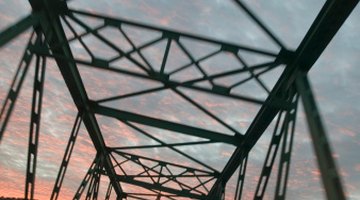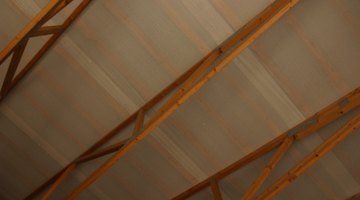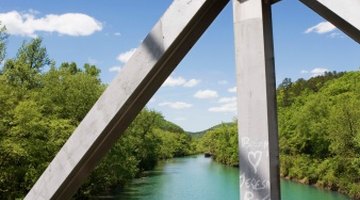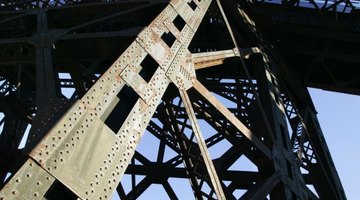Truss Bridge Weaknesses
The design of truss bridges addresses compression and tension forces in the structure and how they are dissipated through the members of the truss. Other forces can also present a danger to the integrity of the structure.

Resonance or fatigue, buckling, torsion, seismic waves and natural disasters can stress truss bridges in various ways.
Buckling

Buckling is an instability caused by the application of a force that leads to failure of the member. Should an extreme compressive force overcome the resistance of the structure, it compromises the bridge's strength so that the vertical members are weakened and crumple as buckling occurs. Stressed further, the horizontal members may stretch to the point where they snap.
Fatigue Cracking

Resonance sets up standing waves that travel back and forth through the truss causing horizontal members to flex up and down. Friction causes heat to build up in the components as they weaken, crack and stretch until they break. Because of the redundancy built into the truss design, one failed member will not cause a failure of the entire structure because the remaining components absorb the force; however, it does weaken the bridge. As repeated flexing occurs at the nodes where the members meet, the gusset plates may crack, causing failure at the truss joints.
Seismic Forces

Truss bridge construction offers little resistance to seismic waves resulting from earthquakes or volcanic eruptions as they race through the ground, resulting in movement in three directions: horizontal, vertical and side to side. Transportation engineers retrofit many older truss bridges in an attempt to make them more stable during a seismic event. This is a difficult task because the age of the bridges, and the construction methods employed at the time of their building varied for individual bridges. Rather than destroy structures and rebuild at a prohibitive cost, engineers must evaluate each bridge on an individual basis.
Torsion

Although truss bridge designs allow the wind to blow through the structure by offering little resistance due to the open areas between the members, high storm winds and hurricanes can produce torsion forces that twist the structure. Torsion is a deformation of the structure caused by the twisting of one end while the other remains motionless.
References
Resources
Writer Bio
Diane Evans is a retired civil engineer who has worked as a freelance writer/illustrator since 1988. She writes for various online publications, and also authors nonfiction and fiction for children’s and adult publications. Her education includes a B.S. in biology and an M.S. in biochemistry from Vanderbilt University, as well as a Bachelor of Civil Engineering from the Georgia Institute of Technology.
Photo Credits
- Comstock Images/Comstock/Getty Images
- Comstock Images/Comstock/Getty Images
- Hemera Technologies/AbleStock.com/Getty Images
- Jupiterimages/Comstock/Getty Images
- Thinkstock/Comstock/Getty Images
- Thinkstock/Comstock/Getty Images
More Articles



